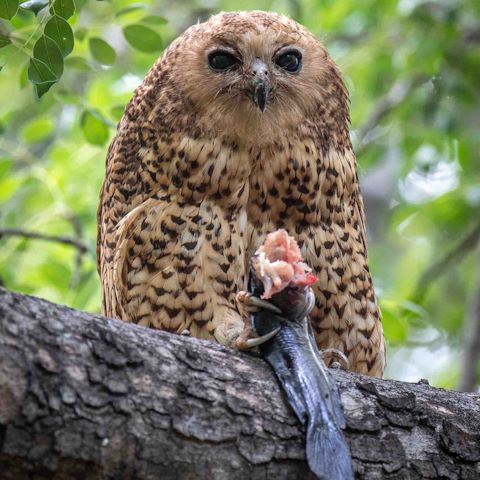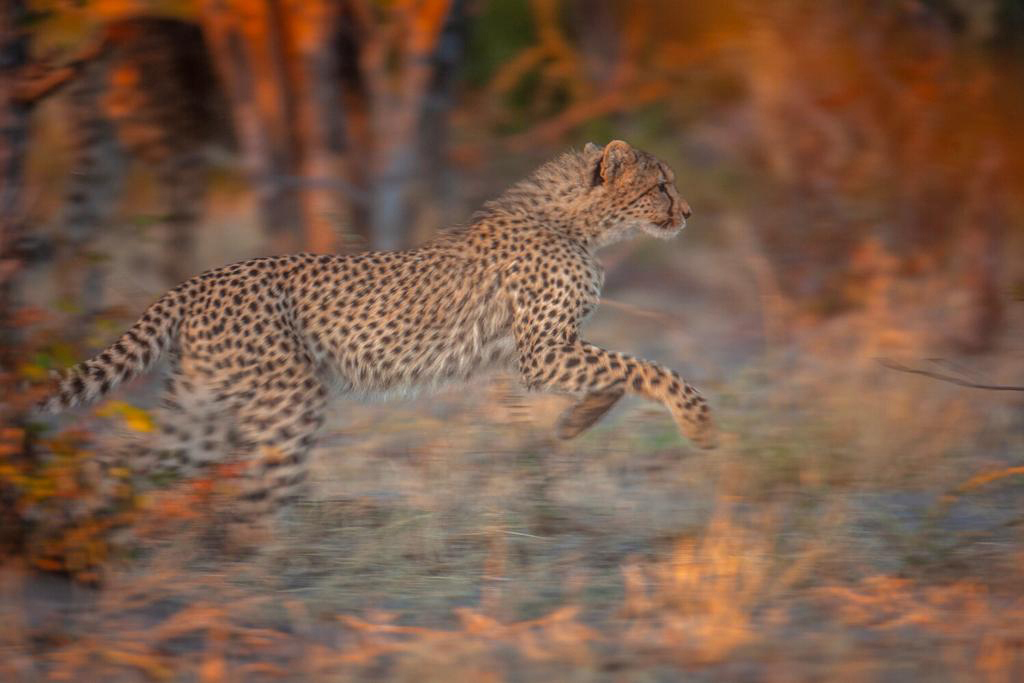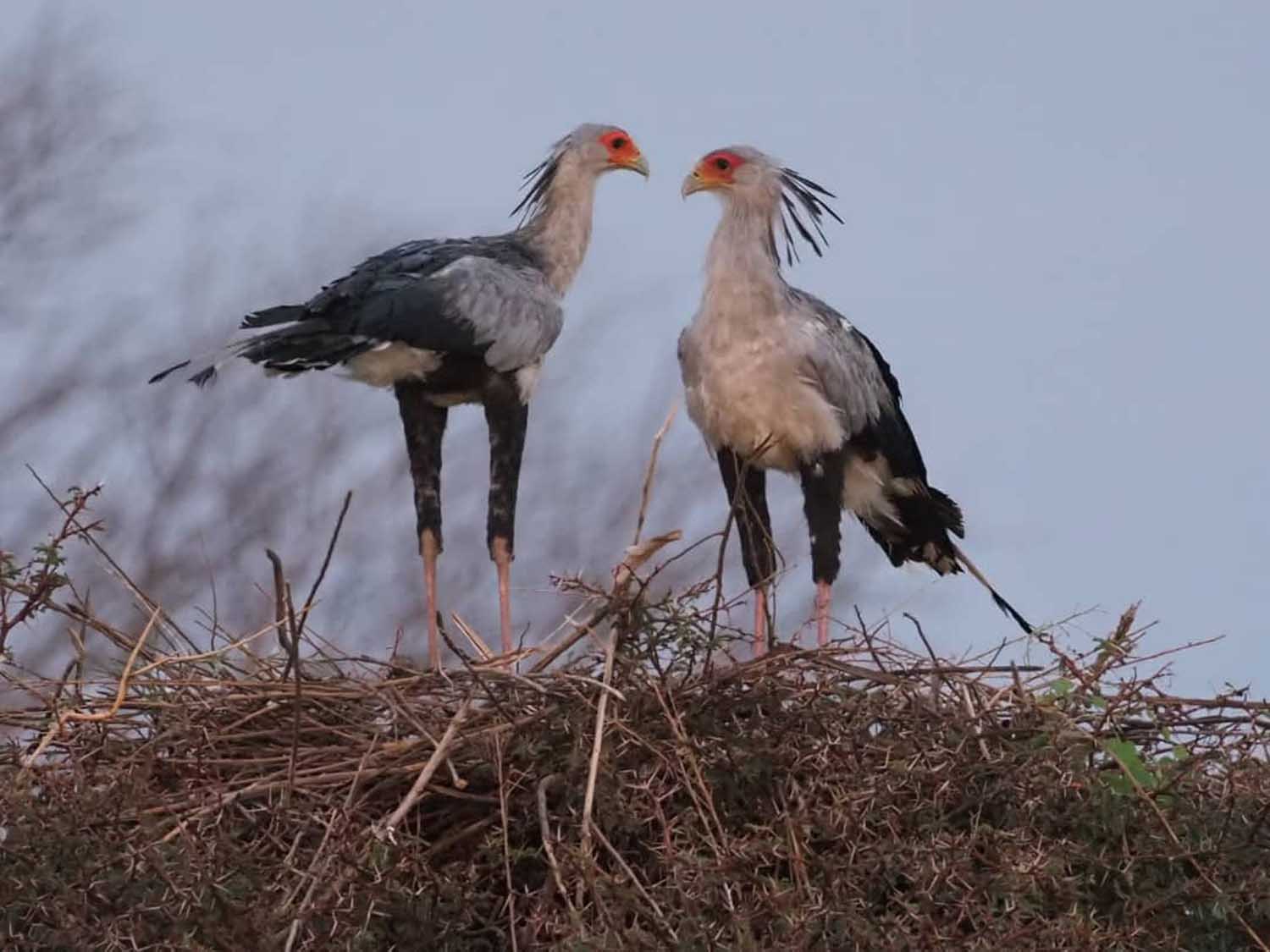A drive along the Gomoti River inspired many to capture stunning close-up photographs of hippos playing in the water, and elephants swimming across the river, with some also bathing.
The four young male lions seem to be home and very relaxed in the north along the Gomoti River, and there don’t seem to be any significant challenges for them that side. These boys are now old enough to be considered a threat to other male lions and it is evident they are looking to establish a territory and a pride of their own. Their fathers visited their area recently with the intention of a coup, after hearing these young boys calling every night. They came back with fresh wounds, which is an indication of an altercation with their sons in the north, and it was evident the boys did not let them escape unscathed.
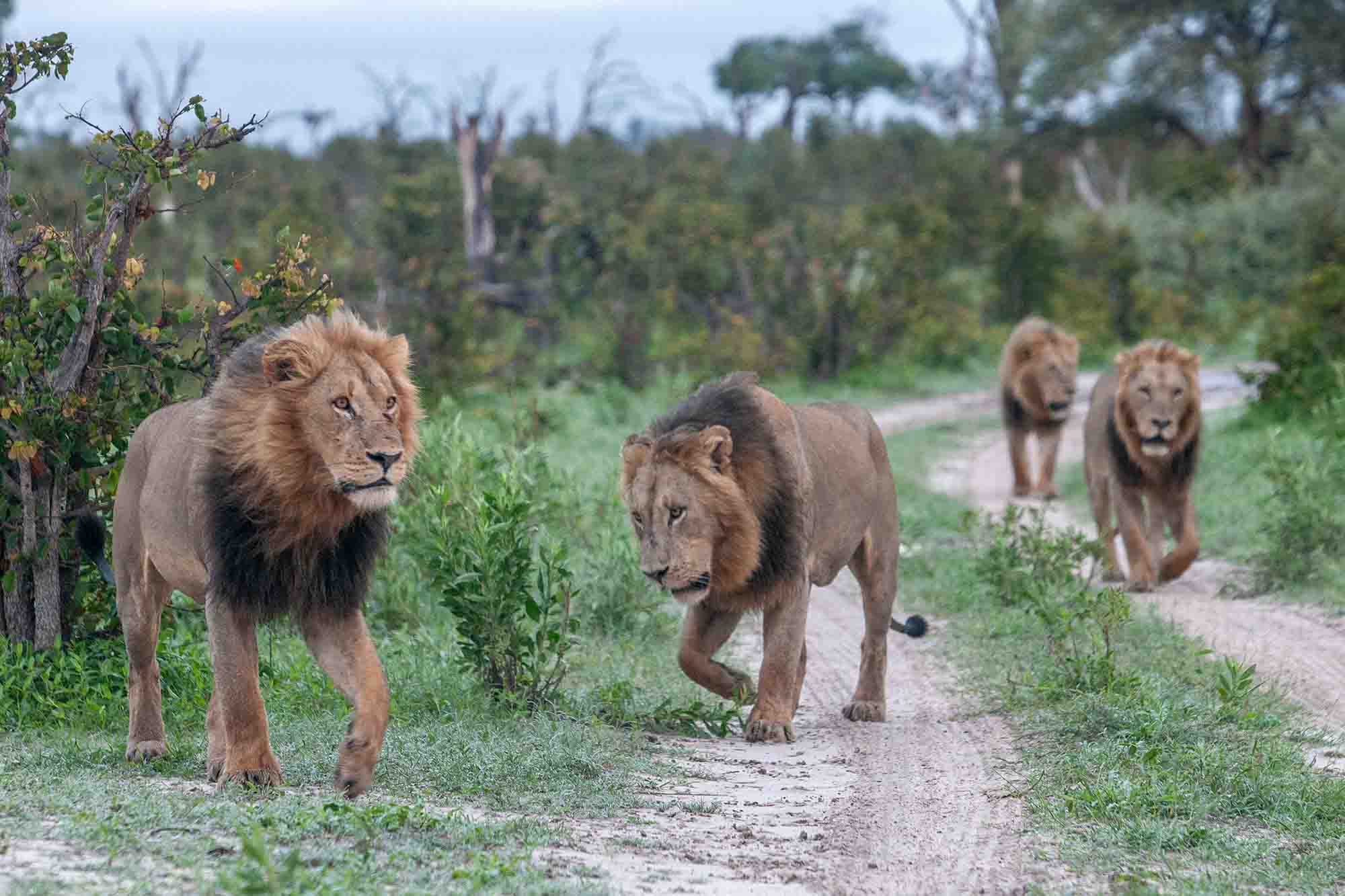
Although the two dominant males are mighty lions in their own right, and have ruled this territory with iron fists to remain kings of their territory for almost eight years now, challenging their four sons, who are in the prime of their lives, could prove fatal. The youngsters want to rule the same way their fathers taught them.
The two males now avoid that area, spending the majority of their time in the area not far from camp, where their core pride of 22 collectively, including four young cubs, has its territory. One of these young males was seen near the airstrip for a week mating with a female from the Matsebe Pride. The Matsebe is a pride of 11 adults and four cubs that has been under their fathers’ domination for a long time.
The two dominant males encountered another physical challenge when two nomadic males came in through their territory last month, and did not take kindly their presence. Limpy was found with a gaping wound that was consistent with an attack from another lion. These males have been in and out of the territory causing chaos, with the intention of an upheaval. As the tension kept rising between the four males, the two dominant males took things very seriously and fearlessly attacked these two nomads, forcing them out of their area before they destabilised the whole pride.
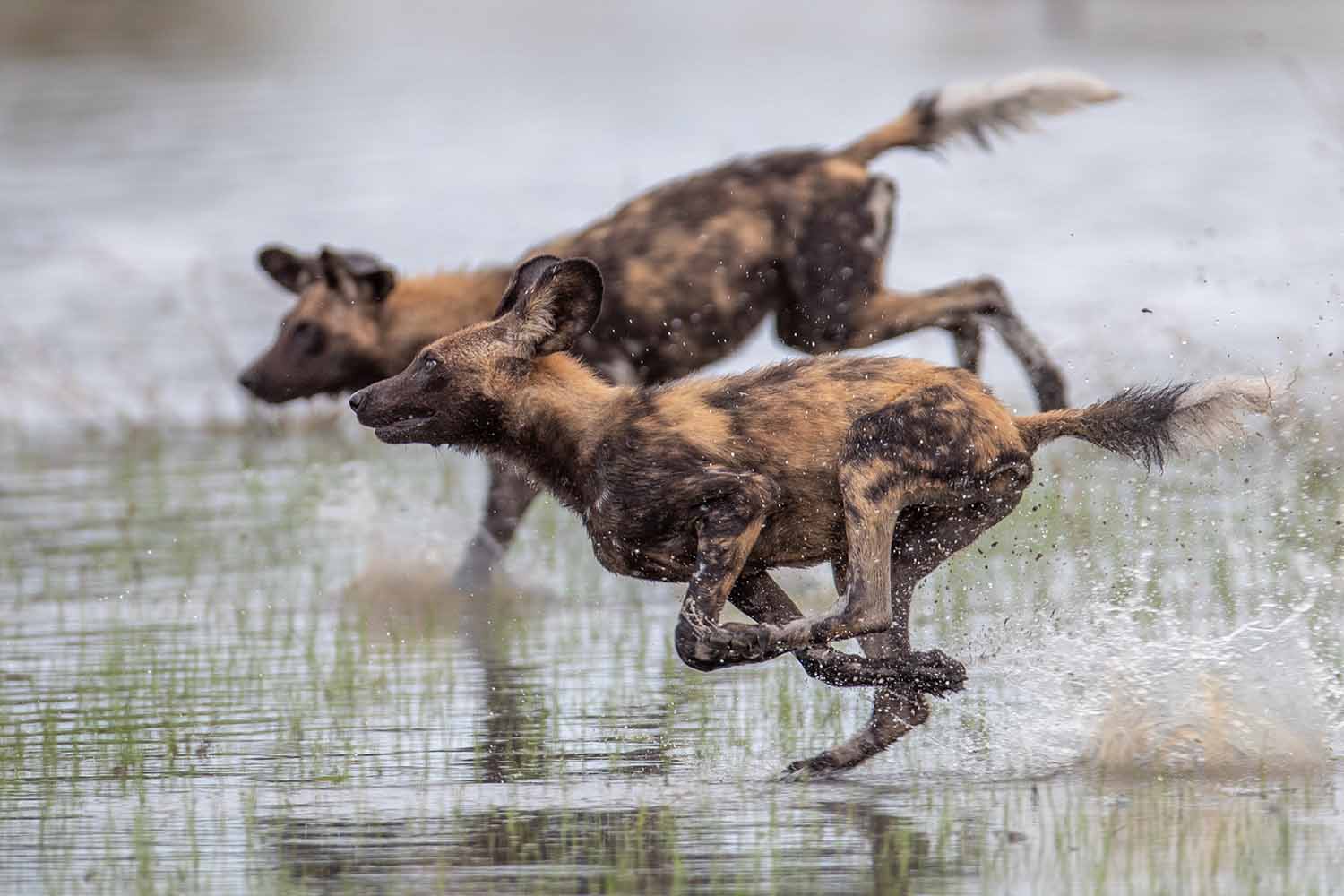
In the last month, there has been a decrease in the Gomoti River water level, with some places drying up and prompting frustration between the hippos as they compete for territories within the available water. Then suddenly, in the last 10 days, there was a noticeable rise in the river’s water level, submerging some mud and sand banks that were previously visible. This is suspected to be from the increased rainfall in the west of the country in January and some days in Feb.
The drive along the Gomoti River is still astonishing, despite some parts of the river still being dry. Spotting a hippo out of water is something very special, and helps one to appreciate its size and scale, and also gives photographers a unique opportunity to photograph them out of their element. Although this is a very rare sight in nature, it is frequently seen along the Gomoti River where lots of hippos and their calves are observed in their resident lagoons as well as out of the water, grazing on the lush green grass.
Watching large herds of elephants as they emerge elegantly from the forest flanking the river bed before heading to the water is a spectacular sight. It is wonderful to watch them swim, play and drink in such large numbers. Being able to capture a large herd of elephants of different generations moving together is such a treat for a photographer. Some really impressively enormous individual bulls were photographed enjoying themselves in the marsh areas and in the open plains, showing off their incredible tusks as they strode through.
A huge herd of buffalos, approximately 600 in number, constantly circulated between the northern part of our reserve and the neighboring Moremi Game Reserve, where the Gomoti River is the boundary. The older male buffalos that have isolated from the big herds, were seen around the water pans mudding themselves. These males often band together, and we do see a lot of them in the Gomoti Marsh area, seeking the moist and soft grass and vegetation, on account of their deteriorating teeth.
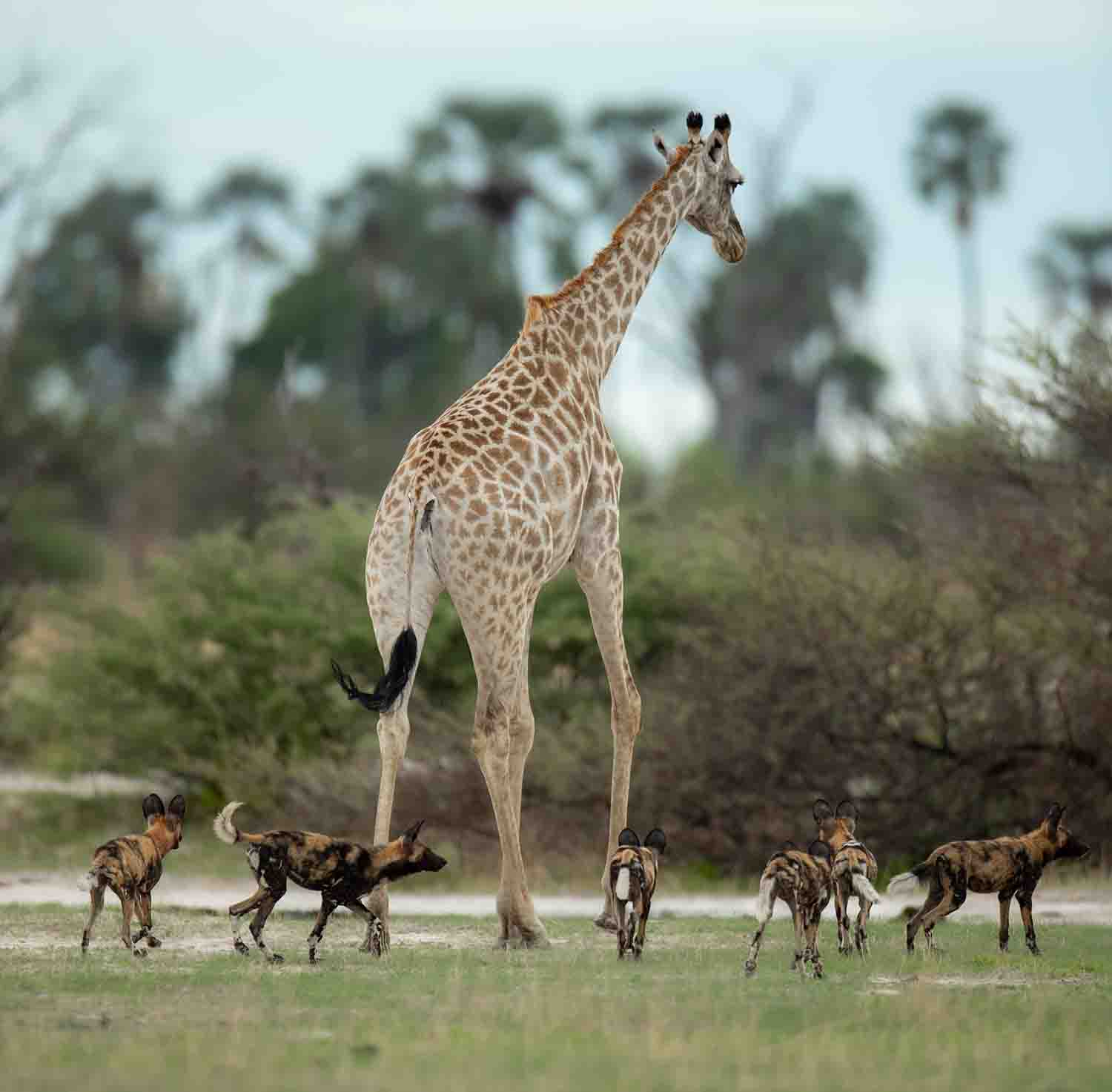
Wild dogs were seen enjoying playing in the water pans, chasing each other around, although mindful of a couple of hippos there. They continued to provide astonishingly well for their nine youngsters born mid-last year; the pups are doing well and are very healthy. This was a great success for the wild dogs to have successfully raised to maturity nine out of 15 puppies, given the abundance of other dominant predators such as lions and hyenas, which are their main natural threat in the area. Our guests had several opportunities to watch them kill impalas in what they described as a particularly gruesome manner. When hunting, wild dogs catch and begin eating while the prey is still alive. Although difficult to watch, some unique photographic opportunities are presented as the fascinating behaviour of the pack unfolds.
We recently watched a male and female leopard in courtship near Chitabe main camp, and one of our guests caught on camera a male leopard killing a spur-winged goose that he caught near a waterhole. The three popular males, Radikolobe, Sinatra and the Mowana male were frequently sighted in action as well, either hunting or feeding. On many occasions, our guests watched Radikolobe walking around doing brief checks on warthog holes for any piglets that may be resting inside.
January was the predators’ time of plenty, where they were spoiled for choice and taking advantage of baby antelopes that are an easy hunt. However, it is also a season of conflict between predators and mother antelopes. Several leopards were seen with baby impala kills braced in trees.
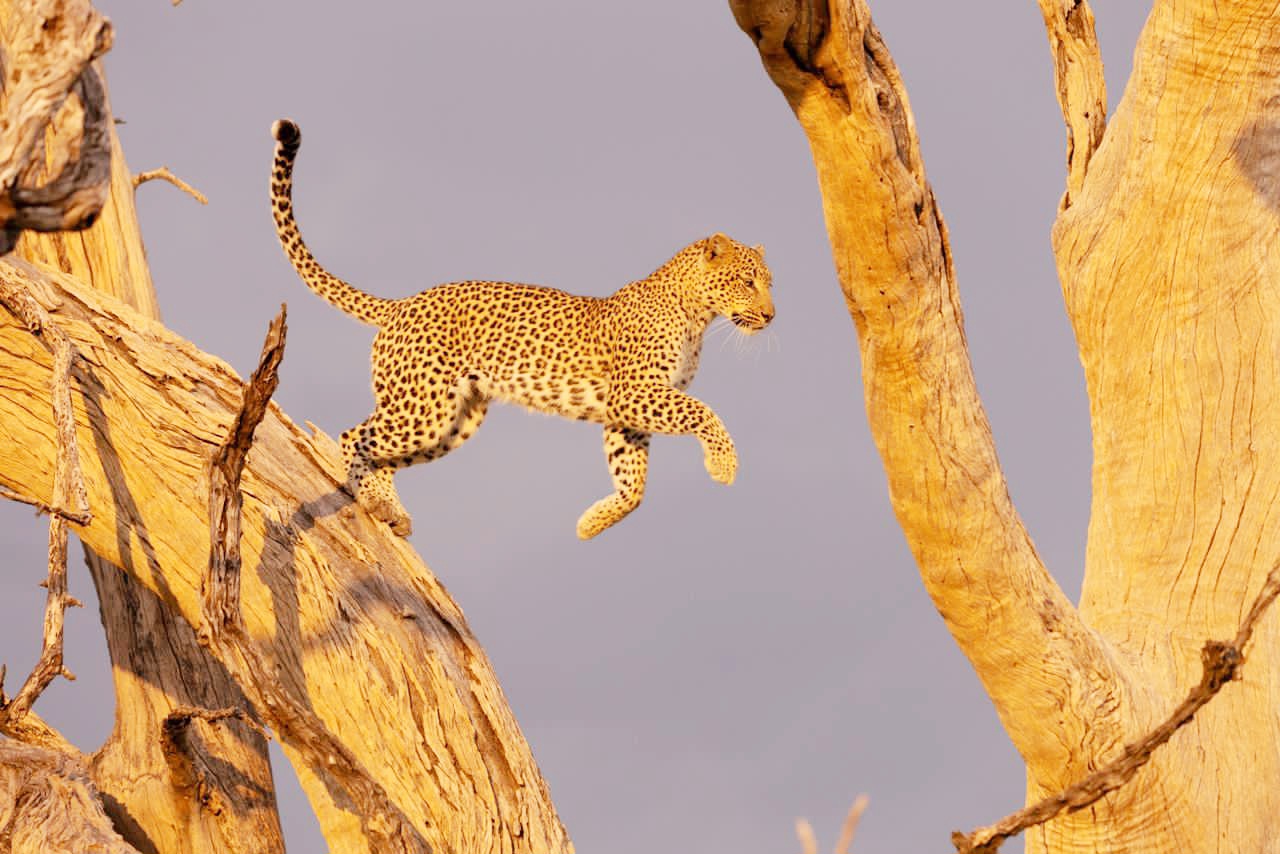
Mosadinyana, the most popular female, also appeared in a lot of our leopard sightings during the last two months. She often hunts not far from camp, which is the area of her domain. Despite the tall grass, which can be an advantage or disadvantage to other animals, here is where a hunter and the hunted can easily miss each other by inches. For cats, a place without cover is not an ideal hunting ground, but for prey species it’s a good place. Mosadinyana always hunts successfully in these tall grasses, moving stealthily and skillfully. Setting up her ambushes, she hardly let a single opportunity go by. Where these tall grasses end, there is the short couch grass that offers nourishment to many prey species. If spotted by a prey animal, she will move on to look for prey that are unaware of her presence. She knows further effort on a prey animal that has already seen you is a waste of time.
A great moment of her in action, that our guests enjoyed the most, was watching her take a long detour, stalking two male impalas that were preoccupied with play fighting in the tall grass, moving in bit by bit when the impalas were distracted. She is a wise hunter and knows very well that a successful hunt is determined by patience and timing, and the slightest mistake could easily ruin her effort. This hunt did not end in failure and she managed to make a kill with our guests watching.
Following a leopard hunting this way can keep our guests busy for long hours in the morning. This is a typical situation with leopards hunting here, unless they kill quickly.
